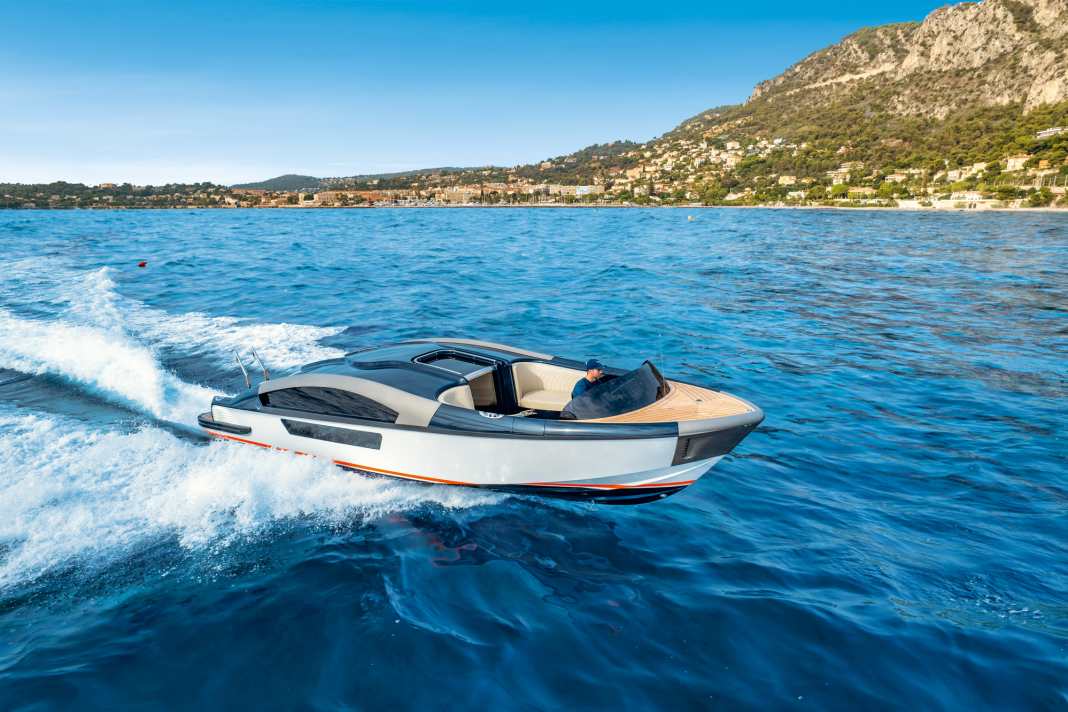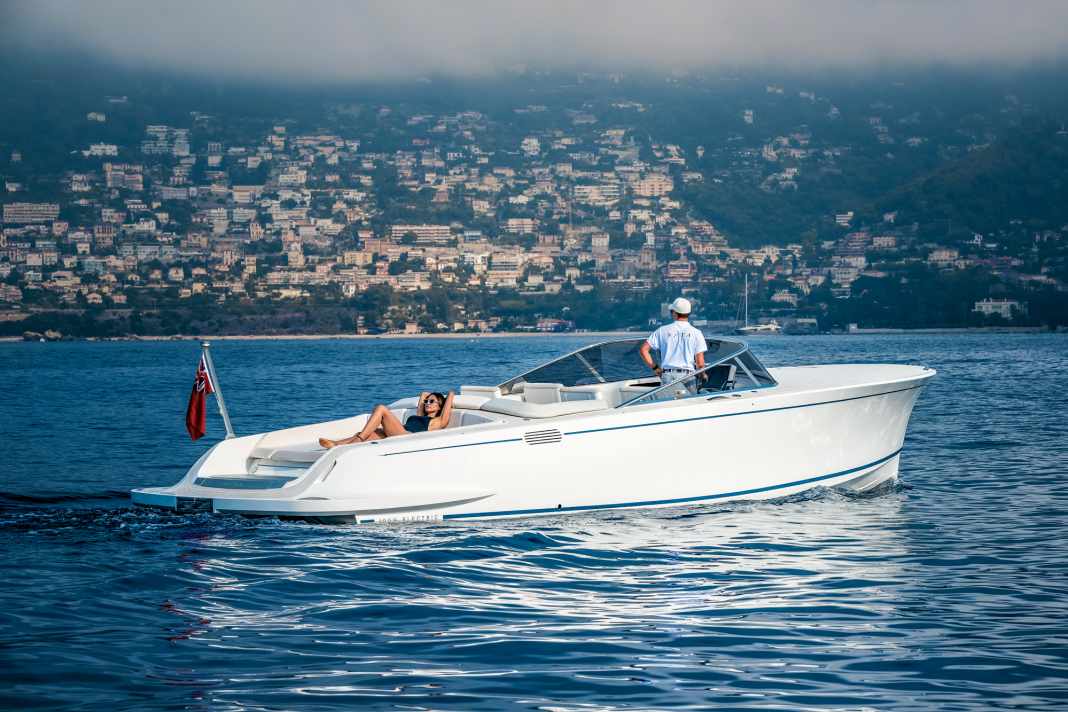





In this article:
Tender"Miss Wonderley" convinces
If you want to succeed with a new brand in the highly competitive tender market, the best way to do this is with an egg-laying woolly milk sow. The one from Falcon is called "Miss Wonderley" and measures 10.60 metres in length and 2.96 metres in width. Behind the company from Southampton in the south of England is Mark Pascoe, known from the custom dinghy forge of the same name.
Its debut model is a plug-in hybrid, whose combined battery capacity of 50 kilowatt hours is provided by two diesel engines or the plug. The drive system was supplied by Huracan Marine, which combines Hyundai Seasall units with Z-drive and 199 kilowatts of power each with a 27 kilowatt electric motor via a specially developed V-belt clutch. Diesel-electric speeds of just over 35 knots are possible and a range of 200 nautical miles is realistic at a calmer speed - important for a working vessel that sometimes spends the whole day travelling between yacht and land.
Whisper-quiet pick-ups are possible with a maximum of nine knots and 16 people, including crew. Michael Leach Design has created a wave-shaped design and the helm station with its four displays resembles a crescent. The equipment leaves nothing to be desired: electro-hydraulic steering, trim tabs, gyro stabiliser. The aft section continues with boarding options on both sides, stainless steel cleats set into the bulwark and seating nests for guests with a thirst for fresh air. The sliding doors downwards are sealed with inflatable seals. Two leather sets, porcelain flooring and bamboo panelling await guests there. There are side windows at two heights to guarantee a calming view of the horizon while sitting or standing. "Fräulein Wunderlich" knows how to impress.





Water drone with pulling qualities
There are many foil boards with electric motors, but only one manufacturer offers a remote-controlled tow boat. The eTow from Takuma is 175 centimetres long and is also aimed at those who want to get into floating water sports. The first advantage: constant traction generated by jet drives with two 5.5 kilowatt outputs. With two 25-amp batteries, they bring the 75-kilogram vehicle up to 24 knots. As underwater wings significantly reduce the gliding resistance when foiling, this is completely sufficient.
Another plus is the easy combination with conventional foil boards from kitesurfing or wingsurfing, which do not require propellers - a considerable safety gain - and heavy batteries. The latter rob e-foilboards of their light-footedness. Advanced riders use eTow to pull themselves into waves where they can get rid of the rope. The water drone follows them and brings the barbell back after a successful ride. However, at 14,950 euros, the French also charge a similar price to an e-foiler.



Stylish stromen with American tender
The oldest shipyard in the USA produces a modern day cruiser. A contradiction in terms? Not at all! The Scots from Vita Yachts have their 10.50 metre e-flagship Lion built by Hodgdon. The halls in the east coast state of Maine have already produced various individual tenders and the extreme sailboat "Comanche" (now "Andoo Comanche"). The elegant and powerful lines were supplied by the Milan studio Borromeo de Silva. At the heart of the Lion is a lithium-ion battery bank with a capacity of 245 kilowatt hours, which can be fully charged in an hour and a half at Aqua superPower DC charging stations.
Thanks to its lightweight construction, the dayboat has a displacement of just five tonnes. However, the bow compartment with day toilet and washbasin is rather spartan. Up to eight people can sit in the cockpit, which becomes a U with a dining table in the centre thanks to the folding backrests. Two electric motors whir underneath, which together and continuously deliver 300 kilowatts to the Mercury Z-drive. The top speed is over 35 knots, with an economic planing speed of 24 knots.




